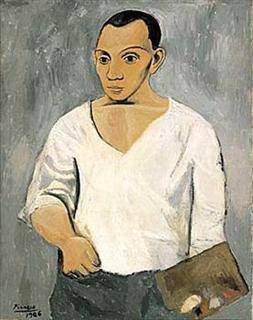 ARCOmadrid celebrates its 30th anniversary ARCOmadrid is getting ready to celebrate its 30th anniversary. Three decades that have propelled this fair to centre place in the Spanish art market, while consolidating its international reputation as one of the world’s major contemporary art events
ARCOmadrid celebrates its 30th anniversary ARCOmadrid is getting ready to celebrate its 30th anniversary. Three decades that have propelled this fair to centre place in the Spanish art market, while consolidating its international reputation as one of the world’s major contemporary art events
February 16-20, 2011
]]>
Source: ARCOmadrid
The 25,000 visitors registered at the first edition back in 1982, have increased manifold to the 148,000 who turned up for the event in 2010, while the 182 journalists who covered the opening fair have given way to 3,222 last year. Throughout these thirty years so far over 4 million people have passed through the turnstiles at the fair, to contemplate and, of course, to buy some of the thousands and thousands of works of art on exhibit year after year.
What these three decades have shown us is that there is a close correlation between the art fair and the wider Spanish art scene. As ARCOmadrid became increasingly more professional, strengthening its foreign profile and specifically market-oriented aspects, a countrywide museum and exhibition infrastructure was being set in place in Spain, new collectors began to emerge and a whole system that has injected strength into the art market was created almost from scratch. In this regard, over these 30 years ARCOmadrid has been instrumental in the formation of major collections, including, among many others, Fundación Coca Cola, Musac or Bergé, while giving greater resonance to activities of museums and acting as a gateway into Spain for international art. Obviously, the fair has also played a critical role in publicising the work of Spanish artists abroad.
Focus Russia
Every year ARCOmadrid throws a special spotlight on a different country. On this occasion, the FOCUS RUSSIA programme will give visitors a chance to acquaint themselves with the changing face of Russian contemporary art galleries, not only in Moscow, but also in other large cities like Saint Petersburg or even in the faraway Vladivostok. An emerging art market with huge potential, Russia has seen huge growth since the dismemberment of the Soviet Union.
Perestroika cleared the path for the recovery of the art market in Russia, paving the way for both public and private initiatives. Private collections and contemporary art museums have mushroomed since, with such notable examples as the Moscow Museum of Modern Art (MMoMA), opened in 1999, or the Nizhny Novgorod National Centre for Contemporary Arts, founded in 1997. Barely ten years were sufficient for the two institutions to stake out a place for themselves. Following this path, Russia’s traditional museums have started contemporary art programmes, notably the Hermitage in St Petersburg with the Hermitage 20/21 initiative. Spectacular growth is also to be seen in the international dissemination and collecting of Russian art. In 2009, Karen Kettering, an expert in Russian art at Sotheby’s, said: “the Russian art market lacks any precedents, because ten years ago it just didn’t exist.” In this regard, the results obtained by the Russian modern and contemporary art market have been highly positive and have maintained sustained growth even in these times of financial downturn
Follow us on:

